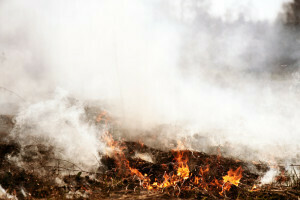 Experts estimated that around 1 million homes in Sydney suburbs are prone to bushfire, and according to a report by the NWS Rural Fire Service, almost 200,000 homes are located in areas that are highly vulnerable to bushfire attack.
Experts estimated that around 1 million homes in Sydney suburbs are prone to bushfire, and according to a report by the NWS Rural Fire Service, almost 200,000 homes are located in areas that are highly vulnerable to bushfire attack.
While the prospect of bushfire present is serious matter, most properties in bushfire-prone areas do not have emergency plans and many residents fail to prepare their homes to a level that would increase the survivability of the structures as well as ensure their own safety.
It is imperative for people living near the bushland to be prepared. And if you are residing in a location where bushfires can happen and become a serious threat to your home and your loved ones, then perhaps these safety tips should be something you might want to hear and apply.
1. Smoke alarms are a must.
The smoke alarm suited to your needs wholly depends on when you purchased or built your home. There are certain policies in place that dictate what type of smoke alarm should you install in your homes. It is best that you consult with a fire protection professional to determine the right kind that suits your home.
Placement of smoke alarms must be a top consideration, particularly if you live in a large house together with several family members. Be sure to consult with a professional on where to position your smoke devices so that you can maximise its capability. Also, if you reside in a large property, you may need multiple smoke detectors to effectively cover the whole area.
To ensure the quality of your smoke alarms, you should purchase them from trusted electrical retailers, security and fire protection companies, hardware, and/or department stores.
You also need to know that failure to install smoke alarms in your home will result to a hefty penalty from the government.
2. Install ember protection screens.
Even if your house is situated 100 meters from the fire, your home is still at risk because of embers that might enter your home and ignite anything it touches. Homes and other buildings that have evaporative air conditioning systems are at high risk since air conditioning pads catch fire easily.
When you decide to have ember protection screens installed, make sure they are made of corrosive resistant steel, bronze, or aluminum.
3. Fill floor cavities and other gaps.
Fire crave spaces and embers can enter gaps, which is why it is essential that you fill cavities and gaps in your walls, floors, and other areas in the house with industrial fire retardant foam or sealant and compressed mineral wool insulation (roofs). Gaps include window frames, sill, and door frames.
4. Build a separate storage shed away from the house.
Storing flammable liquids like petrol and chemicals in a separate location away from the residential area is an effective way of reducing the risk of your house catching fire.
5. Clear the area around your house of combustible materials.
Set a 20-metre perimeter around your house and free the area of vegetation, timber, dry leaves, and other rubbish that can easily ignite and increase the risk of a fire.
6. Cut overhanging branches near your roof.
Embers can easily spark branches and can easily carry the fire to your home if they are hanging near or over your roof. It is critical that you cut branches near your roof and trim vegetation around and near your home to reduce the chances of them igniting and damaging your house in the event of a bushfire.
7. Always have an escape plan.
A bushfire is something that is hard to control. Thus, it is important that you have planned your evacuation way ahead to ensure the safety of your life and that of your loved ones. Make sure that you pack all your important documents, medication, photos, and other valuables inside a compact and easy to carry storage box. Also, it is crucial that you know the location of the fire and its direction so you can navigate easily and get out of harm’s way quickly.
You do not want to be trapped inside your house or leave someone behind, so keep in mind that you make doors and windows easy to open from the inside and place your keys where you and the rest of your family can access them.
Bushfire is a serious threat and one that you should be prepared for. I hope my set of precautions will help you in making your home a safer place to live.

